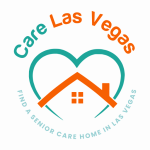
A man put his dad into a nursing home after he had sold his parent’s house. The nursing home was not cheap—$7,200 a month. The dad lived there for five years, at the end of which the money from the house was all gone.
What did the family do? They moved the dad in with family members and took turns taking care of him. When will your money run out? How much do you have each month for senior housing, and will it be enough? Hopefully, you will be able to take some nuggets away from this resource guide that will help you get better prepared.
Costs and Affordability
Our customers have told us that they pay between $1,000 a month (for a small apartment with very few amenities) to over $4,000 a month (for higher-end planned communities). Most places with a large list of amenities and services will have a base rate in the $2,000 to $3,000 a month range and then add other services or memberships on top of that if desired. Keep in mind that there are deals to be found in any market. If you are flexible with regard to location and amenities, friend referrals, extensive searching, and local referral agencies can reduce these amounts.
Independent Care
Independent living can occur in large facilities in small apartments or in a residential setting, where even a room can be shared. The major difference is that no “care” is provided – perhaps meals and housekeeping are included, but no supervision or toileting or grooming assistance is provided.
Remember, living in your existing home is not free. Time is the only resource you cannot get more of. Do you want to spend your precious time, the last of your time on this earth, mowing your yard and trimming your trees to save money? If you have always thought that way, it will be a hard mindset to shift, but it is never too late.
If you still have a mortgage on your house, remember that the amount you have in the budget, along with taxes and maintenance from your current home, will now go towards your new housing. When you factor that in, a facility in the price range above may not be that much more than what you are currently paying.
Another benefit is that most independent living facilities have already been retrofitted to help people with mobility issues. If you planned to pay $5,000 or $10,000 on your current home in order to make some changes to it, you can now apply that amount to your new facility (which already has done that for you). How convenient!
Source: “Independent Living Community Price Ranges and Costs,” Brookdale Senior Living Solutions.
Assisted Living Facilities
Assisted living is the main term to describe facilities that provide assistance with medication management, grooming, toileting, transferring, activities, and much more.
According to the Genworth Financial Cost of Care Survey released in April by Genworth Financial Inc. of Richmond, the national median monthly rate for a one-bedroom unit in an assisted living facility is $4,000. According to a report by Acclaro Growth Partners, the average stay in an assisted living facility is 29 months. So, if you take the $4,000 and multiply it by 29 months, that is over $100,000—the national average. There are facilities in our market that are far from fancy and are much higher than that and most internet sources site the national average to be higher, closer to $4,300. (AssistedLiving.com)
Nevada Specifically
The state of Nevada calls this licensing type: Residential Facilities for Groups (RFFG’s) and the same license is given to a facility that is called “Assisted Living,” and a care home that is often referred to as “Group Home.” Care Homes, also known as Residential Assisted Living, are homes that house less then 10 residents in a residential single-family house. Services provided are the same: assistance with meal prep, medication management, grooming, toileting, housekeeping, and social activities, to name a few.
Memory Care
Memory care is one of the more expensive types of long-term care. Several factors contribute to this, including the specialized skills and training required of staff and increased safety and security measures. On average, memory care costs roughly 20-30% more than assisted living in any given area. Considering assisted living’s average monthly cost of $4,300 per month in the United States, one can expect to pay approximately $5,375 per month for memory care.
Nursing Care/Skilled Nursing Facilities
This level of care is for seniors who required 24/7 nursing assistance. Perhaps they have a colostomy bag or a feeding tube on a tracheotomy. Or such complicated combination of diseases that they must be monitored regularly by medically trained staff.
According to the American Health Care Association (www.ahcancal.org), 59% of assisted living residents will eventually move to a skilled nursing facility. The average stay in a nursing home is one to three years. In many parts of the country, nursing home prices can be $7,000 a month and higher. If you put all these costs together— and consider that, on average, you are looking at about four to five years of some type of long-term care—you can easily come to a total of over $200,000. This estimate does not include any doctor or hospital bills that a senior may incur during that period.
Source: “Cost of Care,” The 2018 Cost of Care Report, Genworth.
Source: “So I’ll Probably Need Long-Term Care, But for How Long? MyLifeSite, 28 June 2018.
Nevada Specifically
Nevada has a residential option for a little bit higher care, called Home for Individual Residential Care (HIRC). These homes may house up to two residents only. Hence, since the staff ratio to residents is so much higher, these homes may admit seniors with a colostomy bag or needing insulin injections, for example. The average cost that I can state from my experience is $4,500 per month.
Continuing Care Retirement Communities (CCRC)
Entry fees can range from low to mid-six figures depending on your location. These entry fees allow you to live in a home or condo in the planned community. Monthly charges range from
$2,000 to more than $4000 a month.
These facilities have contracts called Life Care or Type A that will cover all your care at the facility, even if your level of care goes up. Since the facility is taking on more risk, you are required to provide a larger down payment.
Type B contracts allow you to pay for discounted care when you need it, and they do not require as much of a down payment. If your long-term care policy will cover your extra care costs, you can elect a Type C fee for a service contract that will charge you the going rate when care is needed.
A declining portion of the entry fee is refunded if the resident dies within a few years of moving in. Some people pay the entrance fee of the CCRC with the proceeds from the sale of their home. If you are a couple moving to a CCRC, expect to pay between $200,000 and $300,000, plus a monthly charge of around $2,000 per resident.
The majority of CCRCs are run by non-profits and many have a religious affiliation.
Source: Fried, C. “Continuing Care Retirement Community: Can You Afford It?” Time, 22 December 2016.
Timeline
Do not move into a facility unless you understand all the costs involved and what your budget is. Once you have these mapped out, you can figure out the next step based on your plan. If your budget is on the lower side, you will want to start planning even sooner because great places at budget prices fill up faster in most markets.
Look for a place that has a good value-to-cost ratio. You may not get everything on your wish list, so be willing to make com- promises if you have to on the items that are not as important to you.
If you have long-term care insurance and a significant nest egg saved up, pick your dream location. Enjoy your senior housing experience!
It Never Hurts to Ask
You can negotiate the rates at some facilities. You can receive move-in specials and some services added at a discount. During your working career, you wanted to get paid for your work—so do senior living facilities.
There are many things more important than price. Do you want to be in a facility that serves bad food and has very low energy simply to save $500 a month? Most likely, you do not.

